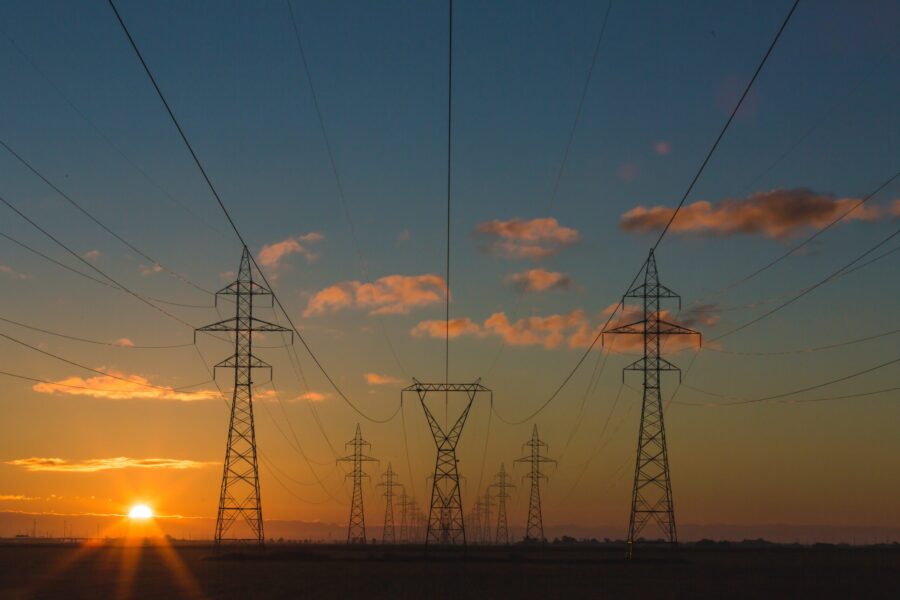
There are energy security issues worldwide, and not all nations have the same access to technological aid. Many regions have fossil fuel-powered plants that can’t even be distributed to all citizens, as load-shedding is a constant concern.
Energy scarcity prevents nations from simultaneously bolstering and decarbonizing their power generation. Digital systems are the answer, but distributing these resources to increase energy independence is complex, albeit it is worthwhile for alleviating reliance on coal and natural gas.
How can nations overcome energy deficits and challenges?
Before nations can focus on decarbonization, they must create a resilient energy pipeline that fits citizens’ needs. Developing countries rely on coal or other fossil fuels to power what they can, and there is pressure for these nations to meet the standards of already developed and technologically advanced countries when they objectively have fewer resources and accessibility. Digital systems can assist in finding where gaps need mending and progress can begin.
A lack of energy security is an international issue, and access to more available energy options like solar and wind is necessary for people to fully realize decarbonization. Therefore, all nations must have the same initial strength in their energy pipelines before they can decarbonize. These are the solutions:
- Improving energy efficiency
- Research and development for innovation
- Providing end-user electrification
- Focusing on renewables
These require nations to interact with supply chain shortages, cybersecurity concerns, stakeholder opinions and raw material extraction issues. Therefore, collaboration, patience and empathy between these systems are crucial for affordable, scalable decarbonization solutions — especially when they must work alongside intermediary non-renewable firm power solutions like blue hydrogen capture and nuclear power.
How do digital systems make efforts stronger?
Solidifying the energy pipeline and realizing the solutions will allow countries to leverage digital decarbonization systems. It will increase safety, efficiency and access by revealing data-driven solutions. Everything from digital twins to cloud mobility to 3D printing will make decarbonization efforts more expedited and inexpensive regardless of a nation’s progress.
Digital systems also reveal the staggering rate the world’s population uses energy. These systems simultaneously show how much humans must decarbonize and how immediately it must occur. Humans have passed the zettabyte threshold of global internet traffic and have more phone subscribers than people on the planet. These numbers provide a baseline for decarbonization, but it’s a high number to match.
With the benchmarks exposed, the energy sector can install digital systems to automate, analyze and streamline their processes to use fewer resources and offset emissions. They must also use digital methods to measure integration compatibility with renewable and decarbonized technologies with existing grids. Data may reveal additional upgrades are necessary, and evaluating current energy goals could inspire revisions.
Digital systems also explain how no-carbon energies can supplement each other. Renewable energy needs diverse approaches to be sustainable for energy distribution and generation. Wind turbines must work alongside solar, geothermal or biofuel systems and storage infrastructure when the wind isn’t blowing. Data proves how many gigawatts a neighborhood or city needs and the likely contributions of each system on a continued basis.
What policies exist to boost greener energy pipelines?
Policy intervention is the sector’s most potent resource when bolstering digital system efforts and accessibility. Some funds and legislation are in place that want to speed up these shifts, but they aren’t as fast as needed.
The Inflation Reduction Act in the US sparked interest and flooded millions to low- and no-carbon energy projects, including research for novel solutions from every variety of power source.
Worldwide, Renewable Energy Portfolios (REPs) and Clean Electricity Standards (CESs), which outline what percentage of energy generation comes from renewable or low-carbon sources, provide multiple avenues for discussion. Should decarbonization policy allow for more harmful forms of low-carbon energy, like fossil fuel carbon capture, to promote flexibility? Or, should it be more aggressive or embrace layered methodologies like sector coupling that simultaneously electrifies and decarbonizes more sectors outside of energy?
An unfortunate side effect of pushing digital systems for energy is a necessary focus on cybersecurity. Cyber incidents on Internet of Things (IoT) devices and critical power infrastructure demonstrates the sector’s vulnerability. From distributed denial of service (DDoS) attacks to instigating power outages to spear phishing attacks on nuclear power, adherence to recommended cyber hygiene compliances is more critical than ever for standardizing energy decarbonization.
Leveraging digital systems for energy pipelines
Digital systems can simultaneously empower nations with little access, reveal metrics humanity must meet, and explain solutions for swift implementation. These are all necessary for decarbonizing the energy sector, especially when digital systems have powerful integrations with the grid, carbon capture technologies, Internet of Things, and countless other resources.
Eventually, combining these digital systems will lead to the most intelligent solutions for a decarbonized industry.
